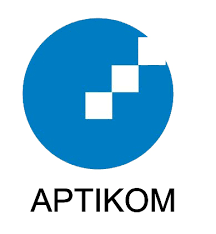Classification of Student Understanding on Covid-19 Booster Vaccine Using Machine Learning
DOI:
https://doi.org/10.18196/eist.v3i2.18680Keywords:
Artificial Neural Network, Feature, Prediction, Students, Support Vector Machine, Understanding, VaccinesAbstract
The outbreak of COVID-19 has been declared a global pandemic by the World Health Organization (WHO). Developing a vaccine is one of the best ways to reduce the virus's impact. Nevertheless, the development of virus mutations produces new variants that diminish the efficacy of the previous vaccine. Booster doses of the Covid-19 vaccine is still a matter of debate among the public, particularly among students, as evidenced by the low rate of booster vaccinations in the community, which is a result of a lack of knowledge about booster vaccines. The purpose of this study is to assess the level of understanding among Universitas Muhammadiyah Yogyakarta (UMY) students regarding booster vaccinations, with the results subsequently serving as a factor or strategy for future government booster vaccination policy decisions. ANN and SVM algorithms could be used to predict the level of understanding of booster vaccinations among UMY students. However, the maximum level of precision in classifying the level of comprehension is not yet known. To determine which of the two methods, kernel and k-fold, provided the maximum level of accuracy, a comparative study was conducted between them. The research was conducted by disseminating questionnaires containing assessments of booster vaccinations to a total of 2095 respondents. Using randomized sampling type, this study yielded an accuracy of 88.45% for the ANN method and 89.93% for the SVM method in each scenario. In addition, the authors conduct feature efficiency, which aims to reduce the time and cost associated with data computation.
References
Arami, M. W., Purnamasari, N., & Rahayu, S. (2022). Analisa yang Mempengaruhi Keputusan Tenaga Kesehatan Melakukan Vaksinasi Covid-19 Dosis Lanjutan (Booster). Jurnal Mahasiswa BK An-Nur: Berbeda, Bermakna, Mulia, 8(2), 51–54.
Kafil, M. (2019). Penerapan Metode K-Nearest Neighbors Untuk Prediksi Penjualan Berbasis Web Pada Boutiq Dealove Bondowoso. JATI (Jurnal Mahasiswa Teknik Informatika), 3(2), 59–66.
Mardi, Y. (2017). Data Mining: Klasifikasi Menggunakan Algoritma C4. 5. Jurnal Edik Informatika Penelitian Bidang Komputer Sains Dan Pendidikan Informatika, 2(2), 213–219.
Anisa, Nur. 2022a. “Mengenal Artificial Neural Network.” Sis.Binus.Ac.Id. 2022. https://sis.binus.ac.id/2022/02/14/mengenal- artificial-neural-network/.
Darmawan, A., Kustian, N., & Rahayu, W. (2018). Implementasi data mining menggunakan model svm untuk prediksi kepuasan pengunjung taman tabebuya. STRING (Satuan Tulisan Riset Dan Inovasi Teknologi), 2(3), 299–307.
Grandini, M., Bagli, E., & Visani, G. (2020). Metrics for Multi-Class Classification: an Overview. 1–17. http://arxiv.org/abs/2008.05756



